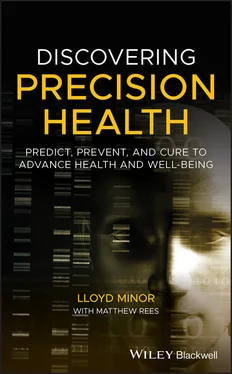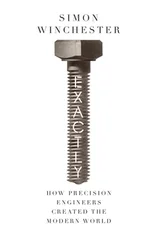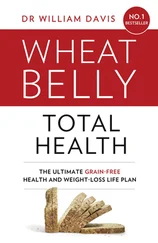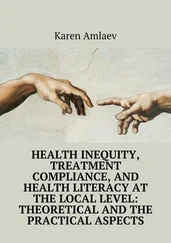AI researchers are working on automating the job of the scribe. Google and Stanford Medicine have been collaborating on a digital scribe project that would listen to the dialogue in a patient visit and take notes. The idea is not merely to take a transcription, but rather to knit the dialogue into a narrative. In the study, each doctor wears a microphone to capture conversations with patients, which are used to train machine‐learning algorithms in getting the gist of a doctor‐patient interaction. The goal is to train the algorithm to generate a pithy progress note. Google researchers say that its scribe can capture complex conversations typical of a patient‐doctor conference even when family members and other practitioners are present in a noisy environment.
Scribes—whether live or automated—can play a valuable role and hopefully help remedy doctor burnout. In the meantime, there are significant expenses for health systems when physicians leave medicine. The process of identifying and recruiting replacements can involve costs from $268,000 to $957,000, according to a study published in 2017 by Stanford’s Maryam Hamidi [32].
I see the manifestations and the consequences of physician burnout. From the colleagues who leave the medical profession at relatively early stages of their career to colleagues whose personal and professional lives are disrupted by stress and anger, the manifestations of burnout are hauntingly tragic. Shortly after I arrived at Stanford in the fall of 2012, a group of clinical faculty in the School of Medicine came to see me to discuss the problem of physician burnout within our own academic medical center and nationally. These faculty wanted to do something about burnout, and they wanted Stanford Medicine to take the lead in proactively and constructively addressing the problem.
To help address these issues, in 2017 Stanford’s School of Medicine hired a chief physician wellness officer, Tait Shanafelt, making us one of the first academic medical centers in the United States to hire someone for such a position. As mentioned above, he is the director of the Stanford Medicine WellMD Center, which is focused on improving the health and professional fulfillment of physicians.
Shanafelt’s interest in the issue stems from observations during his residency at the University of Washington, when he saw the extraordinary demands being placed on interns he was supervising. He subsequently helped design and lead a study to examine the nexus between burnout and quality of care. The study, which was published in the Annals of Internal Medicine in 2002, revealed a close response relationship between burnout and suboptimal patient care: the higher the burnout score, the greater the frequency of residents reporting errors or providing suboptimal care to patients. Among residents with a high burnout score, 53 percent indicated that they had provided sub‐optimal care at least once in the previous month, a rate markedly higher than those without high burnout scores [33]. Shanafelt also spent over a decade at the highly respected Mayo Clinic in Minnesota, where he conducted studies of physician well‐being.
Today, as the head of the WellMD Center, Shanafelt is focusing on several issues. One is building safety nets for physicians who are in distress. Another is helping physicians and leaders create a culture where physicians support each other and create a practice environment that makes it easy for physicians to provide patients the care they need. He is also creating operational metrics that define whether the practice environment is a source of frustration or facilitates efficient delivery of the care patients need and promotes professional fulfillment. As Shanafelt has remarked,
It’s amazing to me that administrative leaders can create spreadsheets with detail to three decimal places for metrics such as how many patients are seen per room per day, how often a clinic runs late, and other operational aspects of the practice environment. But they rarely have categories for things like the consistency of an operating room team working together or how many minutes per night primary care doctors are logged in from home charting in the EHR as dimensions they should be optimizing.
To address this, Stanford has created new metrics—including time spent charting in EHRs during personal time—and is working with administrative leaders to track and improve them by providing physicians additional assistance in the clinic, redesign of work flows, and better team‐based care. Another important intervention has been for every department chair to appoint a director who works with WellMD to improve professional fulfillment for physicians in the department. In collaboration with the clinical and improvement leaders in their departments, these individuals are tasked with addressing the local irritation and friction points unique to their department/specialty or local practice. Larger‐scale efforts with operations and improvement leaders are designed to improve operational metrics on the efficiency of the practice environment (time spent on clinical documentation at home, operating room turnaround time, time per week more broadly).
The center has also been working on organization‐wide efforts to improve dimensions with broad relevance independent of specialty, such as the following:
Cultivation of community and connection between colleagues by helping physicians connect with a small group of colleagues regularly to provide support for the unique personal and professional challenges of a career in medicine—a strategy found effective in two randomized controlled trials that Shanafelt helped lead at the Mayo Clinic [34].
Development and testing of strategies to improve self‐valuation (studies demonstrate that low self‐valuation is a critical driver of burnout in physicians).
Development and testing of strategies to encourage leadership behaviors among division chiefs that cultivate professional fulfillment among those they lead.
Creation of a formal peer support program to serve as a safety net for physicians experiencing distress related to the professional (medical error, friction with a supervisor or coworker, dealing with a malpractice suit) or the personal (relationship issues, problems with work‐life integration).
Stanford has also been at the forefront of developing an organizational model that illustrates how the quest to cultivate professional fulfillment among physicians is about far more than personal resilience and requires structural, system‐level changes in the organization and practice environment. This model has now been used around the country to heighten awareness of physician burnout among those who are able to do something about it, such as administrative leaders and people who serve on hospital boards. A 2018 paper coauthored by several Stanford officials highlighted seven ideas that should motivate board members around the country to focus on making this issue a priority for their organization:
Burnout is prevalent among physicians and other health care professionals.
The well‐being of health care professionals affects the quality of care.
Distress among health care professionals has a tangible fiscal cost to organizations.
Greater personal resilience is not the solution.
Different occupations and disciplines have different needs.
Approaches to remedy the problem have been developed.
Interventions have been shown to work [35].
I’ve been encouraged by other institutions joining our efforts. As of January 2019, 16 academic or academic‐affiliated medical center members (including Stanford Medicine) had become part of a Physician Wellness Academic Consortium (PWAC), which is focused on driving innovative advancement of physician well‐being. The consortium is taking the following steps:
Читать дальше












